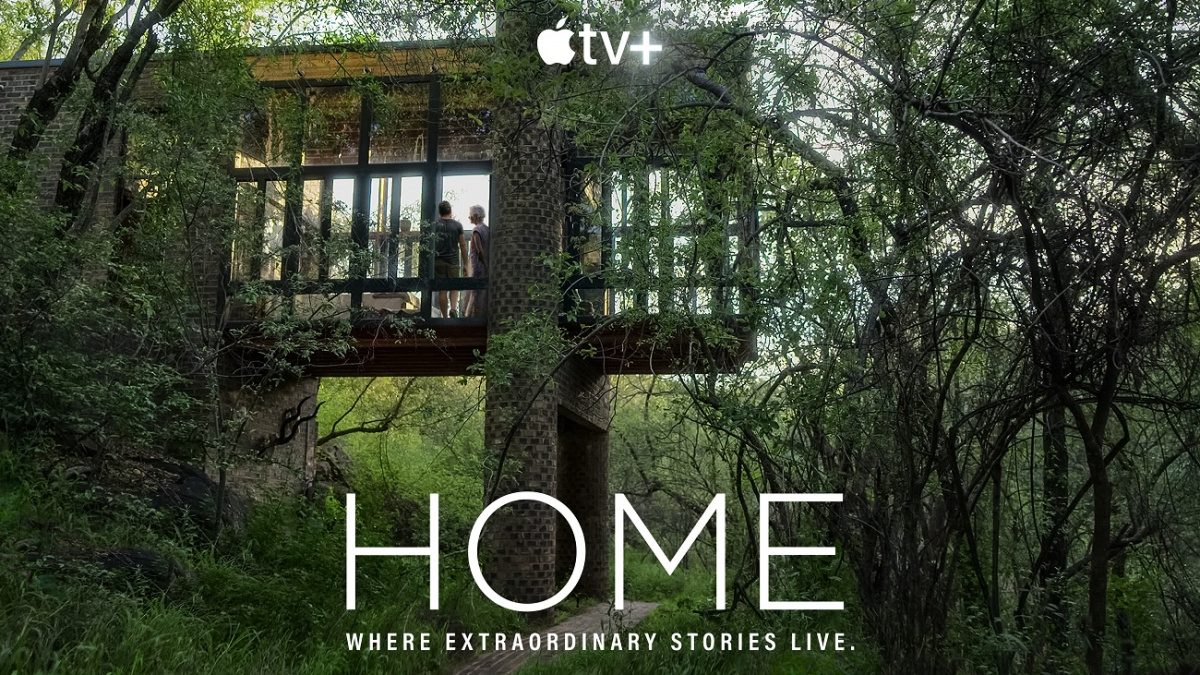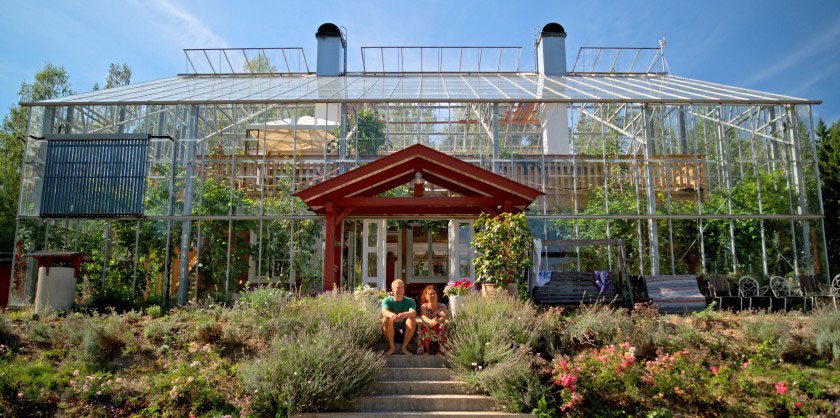The new Apple TV Plus series explores extraordinary residences, like a tiny apartment that can accommodate any room, a house inside a greenhouse, and 3D-printed home that was built in 24 hours.
What makes a house a home? For many people, a home is more than walls and a roof; it’s a place where they feel an emotional connection and a sense of belonging. Home is a place that tells their story. The Apple TV Plus docuseries “Home” explores one-of-a-kind, innovative homes that challenge conventional concepts of living space and are as unique as the families that live in them. Here, we highlight some of the most astonishing and unusual homes from the series.
A Glass Ceiling
In Swedish, the word “hem” refers to a home in general, while “hemma” refers to a person’s individual home, says engineer Anders Solvarm. For Solvarm and his family, their home, dubbed “Naturhus”—a traditional 18th century log cabin completely encased inside a glass greenhouse in the Swedish countryside—represents “hemma.” Inspired by the work of famed Swedish architect Bengt Warne, Solvarm built much of the house by hand with help from his father and brother-in-law. The greenhouse creates a warm “microclimate” around the log cabin, allowing the Solvarms to grow fruits, vegetables and flowers in their garden—even when there’s snow on the ground outside. In addition, the Solvarms have found Naturhus to be a healing refuge for their son, Jonathan, who was diagnosed with autism when he was 4 years old. “Our house is giving us hope,” says Solvarm.
Anders and Rosemary Solvarm in front of Naturhus.
A Deconstructed House for All
Artist Theaster Gates recalls that as a child, he could see neighborhoods change for the better over time as he was bused from his home on the West Side of Chicago to his school on the North Side. As an adult, he earned degrees in urban planning and art, and he set out on an ambitious project to create an “exploded” house in the Greater Grand Crossing neighborhood on Chicago’s South Side. The area is known for high crime and low property values, and Gates wanted to build places where residents could meet, talk, read, share a meal, watch movies, listen to music and experience art—all within walking distance of their own homes. Gates started with the Listening House (music), which was soon followed by the Archive House (a library), The Black Cinema House (Gates’ own residence and a public movie theater), the Stony Island Arts Bank (art exhibition), the Dorchester Art + Housing Collaborative (art exhibition), and the Currency Exchange Café (coffee shop). By investing in a disadvantaged neighborhood and its artistic life, Gates found a sense of belonging that he never anticipated: “It’s allowed me to feel safe, free and home.”
The Ultimate Treehouse
You can “grow” your own house, says Elora Hardy, creative director at architectural firm IBUKU in Bali, Indonesia. All you need is sunlight, water, and bamboo. Hardy was introduced to the resilient, sustainable material when she left her coveted position with top designer Donna Karan in New York and moved to Bali to help her father construct a school out of bamboo. Though Hardy had no formal training in architecture or building design, she fell in love with the project and ended up founding a design company that works almost exclusively with bamboo—which is actually a type of grass and not wood. One of her first major projects was the creation of her home, Sharma Springs. The curving, lyrical structure mimics the leaves and branches that surround it in the forest, and nearly everything in her home—even the door handles, light switches, and clothes hangers—is made of bamboo. Hardy says Sharma Springs keeps her and her family close to nature and reminds them that anything they imagine can be made real. “If you can build castles out of grass,” says Hardy, “what else can you do?”
The Transformer
Architect Gary Chang’s apartment is only 344 square feet, but he manages to make it seem infinitely large. In Hong Kong, where Chang was born and raised, such tiny living spaces are common. Chang grew up in the apartment, which once housed six members of his family and a boarder. As an adult, Chang was able to purchase the apartment and turn it into his own architectural laboratory, the “Domestic Transformer.” Inspired by local vendors who set up their storefronts and wares by day and then pack them away at night, Chang transforms the entire apartment into a dizzying array of configurations. The single open room becomes a living room, a kitchen, an office, a bedroom, a dining room, a laundry, a cinema, or a spa. Chang uses walls that slide on tracks and furniture that swings on pivots to change setups. According to Chang, the possibilities are limited only by his imagination. “I have chosen to make my home, my life, a radical experiment in transformation,” he says.
A 3D-Printed House of Hope
As of 2021, the UN estimates that 1.6 billion people worldwide live in inadequate housing. Until recently, Angel and Isela Javier were among them. The young couple were raising their two daughters in a makeshift shelter made of metal shingles and blankets in one of the poorest towns in Tabasco, Mexico. Though the shelter frequently flooded, the family had no safe running water and had to purchase bottled water for all household needs—an expense that became increasingly burdensome when Angel Javier lost his construction job. “A home for me would be everything,” he says through a translator.
Housing nonprofits New Story and ÉCHALE joined forces with construction technology company ICON to build the world’s first 3D-printed community in Tabasco. Fifty families, including the Javiers, were chosen to live in new
3D-printed homes(link is external) created by a massive 3D printer that was shipped to Mexico from Texas. The homes are made of extruded concrete mortar, cost $7,000 each to build, and can be printed in 24 hours. The families were able to move into the homes in November. “When they walk in, you can see hope come back into their faces and hearts,” says New Story COO Alexandria Lafci. “It’s the privilege of a lifetime to do that for so many families.”









